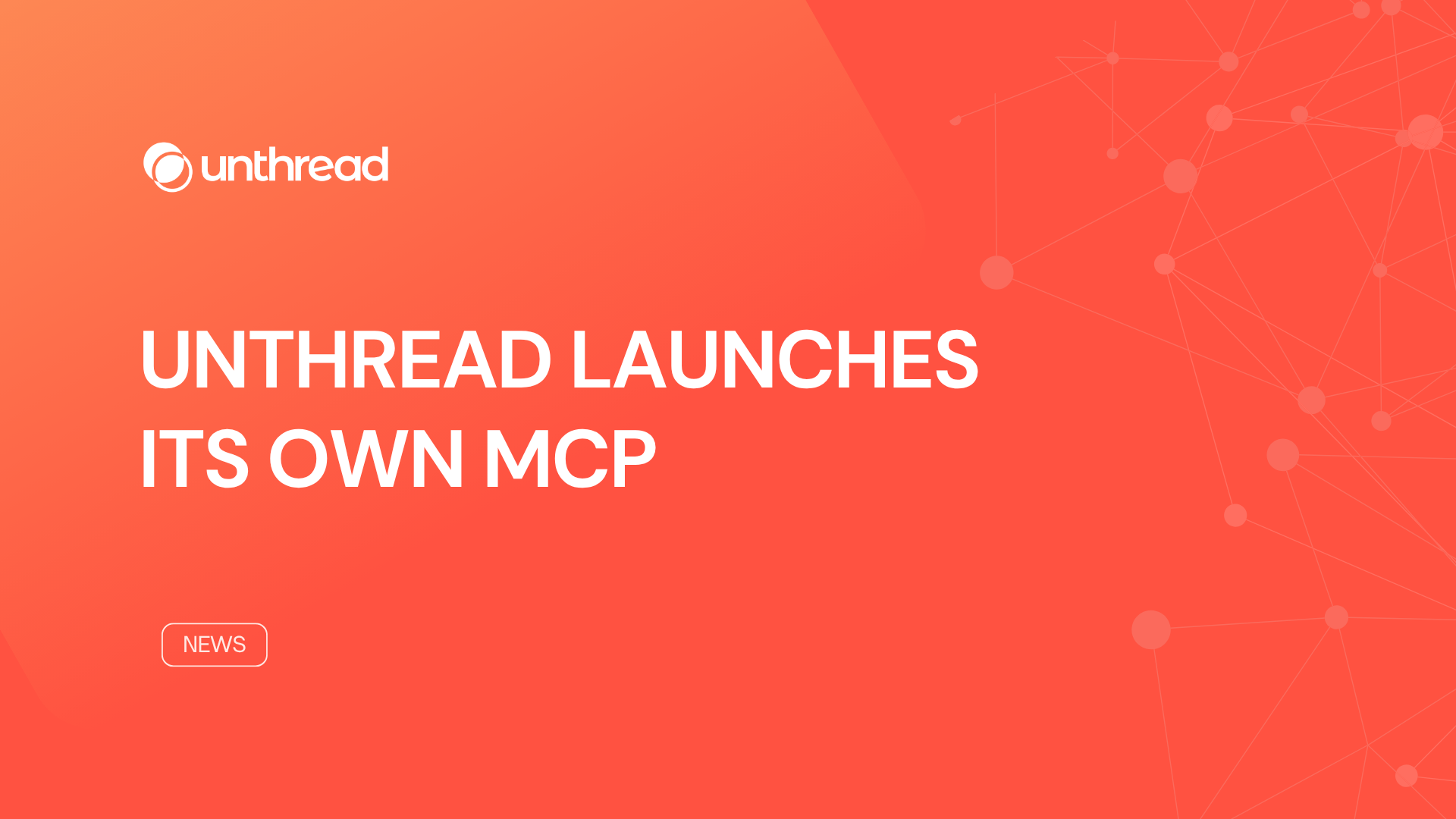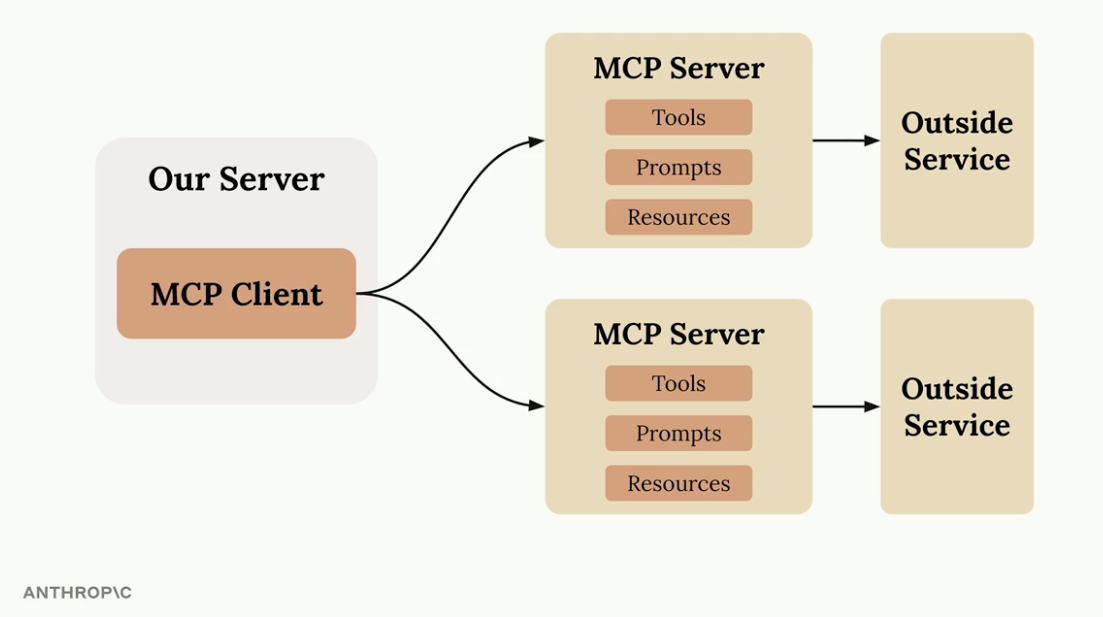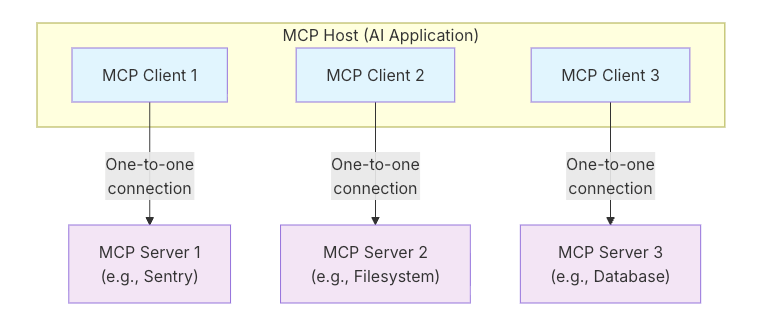Unthread Launches Its Own MCP

The way we connect AI to the systems we rely on is undergoing a fundamental shift. Today, we’re excited to announce that Unthread has launched its own implementation of the Model Context Protocol (MCP), an open standard for interacting with APIs via AI chat.
Background: What is MCP?
MCP, or Model Context Protocol, is an open-source standard first introduced by Anthropic in 2024. It’s designed to allow AI applications to interact with each other beyond the standard REST API conventions that most systems follow today.
Other important terminology: MCP client vs. MCP server. MCP client is the base application you’re using (most likely Claude, ChatGPT, or Unthread’s dashboard). The MCP server is the backend that provides that data to the client. What we’re launching here is our first MCP server. You can use our hosted version or host your own.
Why It Matters
Traditional integrations aren’t compatible with conversational AI. Each new tool requires a custom connection, which adds time, cost, and complexity. With MCP, you only need to support one protocol, and everything else can be connected instantly. This allows your single Claude interface to interact with dozens of tools, all from one chat box.
Now, with Unthread’s MCP server, you can get access to your tickets, documentation, and workflows right from your favorite AI chat tool. This reduces friction, and makes key data more accessible to you and your team to work faster with more data at your fingertips.
What You Can Do with Unthread MCP
With MCP now live in Unthread, support teams can go beyond simple integrations and unlock new, practical workflows.
Query ticket data in natural language
The Unthread dashboard already provides a rich analytics framework where you can get deep insights into your operations and ticket data. Now, for the first time, you can query your data using natural language to get exactly the insights you’re looking for:
- “How many onboarding tickets were opened last week?”
- “What’s the average resolution time for IT requests?”
- “Which tickets are being reopened the most?”
Access knowledge instantly
Policies, troubleshooting steps, and forms can be surfaced in conversation automatically, cutting down on the need to submit a ticket or reach out in Slack.
Manage your inbox with Claude (coming soon)
Close out issues faster by using AI to draft responses, manage statuses, and prioritize tickets without clicking a button (though it will require typing in keys!)
How Some Teams Are Using The Unthread MCP
IT Teams use the MCP to look for common trends in issues to identify where preventative measures are needed. A prompt in Clause as simple as “What systems are experiencing the most reliability issues in the last 2 weeks?” will surface the answer instantly.
HR Teams are able to understand which teams are taking up the most time of their HRBPs or People Ops representatives. They can run a query like “How much time did we spend on tickets for the Engineering department last quarter?” and use that data in any future planning exercises.
Engineering Teams are using our MCP to understand gaps in their documentation. A query like “What issues weren’t covered by our existing documentation?” will return a list that the team can use to generate better docs.
How Does an MCP Work Under the Hood?
Gloss over this part if you’re not interested in the nerdy underpinnings of MCPs (which we certainly are interested in).
The MCP architecture has three main parts connected by two built-in MCP Transports:
- Host – the AI application where users interact (like Unthread).
- Client – embedded in the host, it talks to MCP servers and fetches context.
- Server – connects to external systems and exposes resources, prompts, and tools.
- Transports
- STDIO (Standard input/output). This is most useful for local integrations and command-line tools
- Streamable HTTP (SSE). This is used for web-based integrations. It sends HTTP Post requests from a client to server, and uses Server-Sent Events to stream back responses.
Put simply: the host is the interface, the client is the translator, and the server is the bridge to the outside world. Together, they unlock a new level of capability.


Next Steps and Getting Started
With Unthread’s MCP implementation, support teams can connect to the tools and knowledge they need through a single standard instead of piecing things together each time. This means fewer repetitive tickets, faster answers to common questions, and less time lost on back-and-forth requests. We’re excited to continue building out new capabilities and supercharging customer workflows.
To get access, you have one of two options:
- Contact your Unthread rep to get access to our hosted server connected to your Unthread account
- [Advanced] Host your own Unthread MCP server through our open-source package on GitHub
As always, let us know what you want to see next! We read every bit of feedback from our customers, and you can influence our next big launch!

